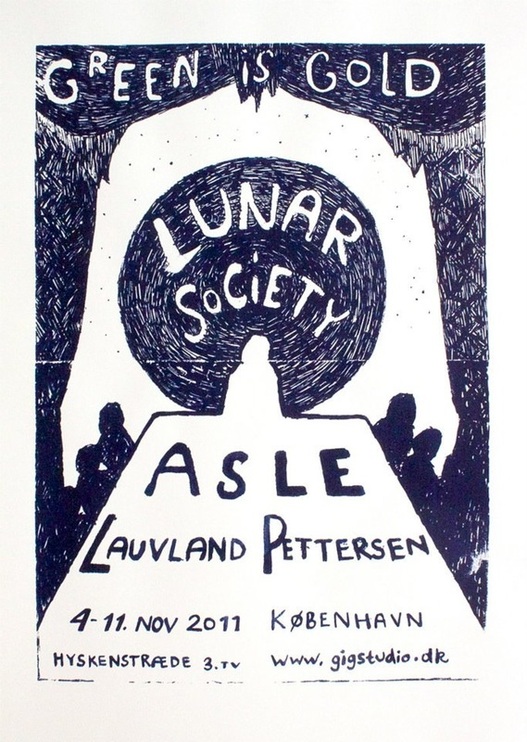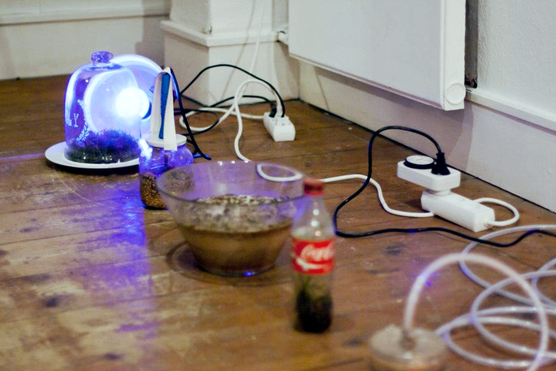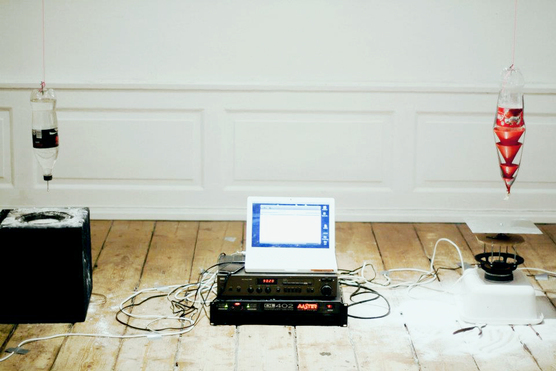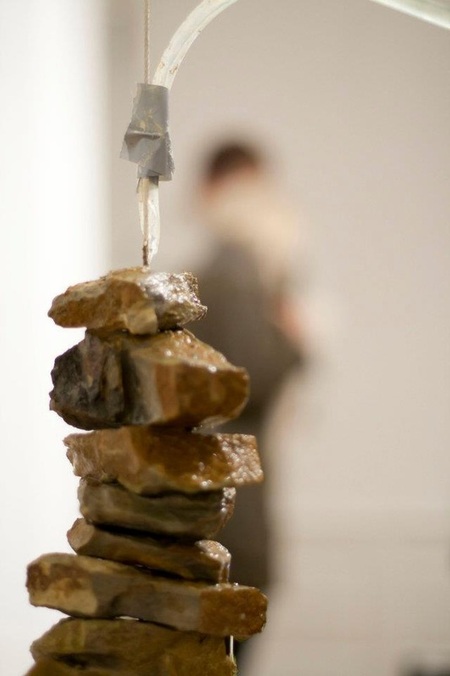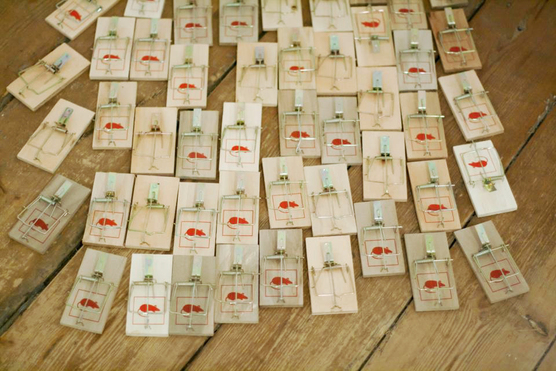Lunar Society
Asle Lauvland Pettersen is a Norwegian artist and theater set designer whose work consists of conceptual, fundamental installations. In Pettersen’s practice, video, objects and performances are often combined with an expression of almost dogmatic conceptual ideas. An equal amount of technology, and an almost naive aesthetic, provides his work with a tempting surface, but as the layers are deconstructed more universes and questions emerge, which encourage the audience to respond and react to. Concepts of existentialism and ecological philosophy are often found to be important elements of Petersen’s work.
The Lunar Society
Pettersen is fascinated by the time of unrest and upheaval between the era of alchemistical experimentation and the Age of Enlightenment. This was a pioneering time, before natural science developed and it saw an almost playful approach to the scientific, resulting in revolutionary discoveries that changed history and the future of living.
The Lunar Society was a community of scientists and the industrial enterprises of the era who, in the early 18th century, would meet each full moon to show their respective experiments and inventions and discuss the application or use for them. Scientist such as James Watt, Joseph Priestley, Matthew Boulton, Erasmus Darwin and Thomas Day were all members and their experiments and findings led to the creation and discovery of, amongst others, the damp machine, oxygen, the theory of evolution and the periodic table.
In this re-fractional phase of natural science, the inheritance of alchemical knowledge and mysterious findings was still present in science. The scientific inventions were presented as entertaining party tricks in high societies and were more often connected to magic rather than science. The fascinating element of this period is that they managed to create these entertaining experiments without actually knowing the scientific laws that they would later become connected to. This empirical approach to these phenomenons has always fascinated Pettersen. The way in which The Lunar Society seemingly played lightly and with a certain curiosity in order to find a specific answer to some of the times most important questions and musings. Questions, which, may yet not even have been asked. History now shows us that these have in fact been some of the most important questions ever to be posed and answered.
Pettersen’s practice also approaches the idea of experimentation with the same lack of knowledge and almost reckless abandon as The Lunar Society. Without knowing how sound is actually heard, how light is visible, what makes smells appear or people live. In the same manor as the pioneers in Science, Pettersen does not have the proficiency in natural science to understand what makes these things happen. The Lunar Society did not know with what they experimented as the principals and natural science, as we now know it today, had not yet been invented. Pettersen ,on the other hand, does not know because he has in fact never learned.
With the same empiricalistic approach Pettersen has attempted to reach a point that is for himself, and most likely the majority of his audience, as groundbreaking as it was for The Lunar Society in the early 18th Century. Petersen’s intentions when investigating these phenonmens are similarly to entertain and astonish.
Through this project Pettersen wishes for his work to have an existence in the world, as well as an effect. For it to show that some things in this world do exist that make a difference. It is important to Pettersen to continually discuss what our role is, how we relate to the world and if we wish to be a part of it or not. The advantage which the arts has is that it does not necessarily have to provide the world with honest answers. Through art we can look upon the world as a model and thereby begin a dialog and an interpretation regarding the real truths of realities. Often, when we interpretate cases through the laws of natural science, a chemical element or reaction is viewed as if it has always been.
Nature, civilization and culture have a long history of coincidences, and a playful line of incidences. Humans and history are a result of random coincidence. Both looked upon and interpretated differently according to whom the interpreter is. These many different analysises challenge what we believe to be truths.
The exhibition is a short version of the pseudoscientific deconstruction of known and unknown natural scientific principles, shown through installations consisting of both ready-mades and low-tech interactions.
Asle Lauvland Pettersen is a Norwegian artist and theater set designer whose work consists of conceptual, fundamental installations. In Pettersen’s practice, video, objects and performances are often combined with an expression of almost dogmatic conceptual ideas. An equal amount of technology, and an almost naive aesthetic, provides his work with a tempting surface, but as the layers are deconstructed more universes and questions emerge, which encourage the audience to respond and react to. Concepts of existentialism and ecological philosophy are often found to be important elements of Petersen’s work.
The Lunar Society
Pettersen is fascinated by the time of unrest and upheaval between the era of alchemistical experimentation and the Age of Enlightenment. This was a pioneering time, before natural science developed and it saw an almost playful approach to the scientific, resulting in revolutionary discoveries that changed history and the future of living.
The Lunar Society was a community of scientists and the industrial enterprises of the era who, in the early 18th century, would meet each full moon to show their respective experiments and inventions and discuss the application or use for them. Scientist such as James Watt, Joseph Priestley, Matthew Boulton, Erasmus Darwin and Thomas Day were all members and their experiments and findings led to the creation and discovery of, amongst others, the damp machine, oxygen, the theory of evolution and the periodic table.
In this re-fractional phase of natural science, the inheritance of alchemical knowledge and mysterious findings was still present in science. The scientific inventions were presented as entertaining party tricks in high societies and were more often connected to magic rather than science. The fascinating element of this period is that they managed to create these entertaining experiments without actually knowing the scientific laws that they would later become connected to. This empirical approach to these phenomenons has always fascinated Pettersen. The way in which The Lunar Society seemingly played lightly and with a certain curiosity in order to find a specific answer to some of the times most important questions and musings. Questions, which, may yet not even have been asked. History now shows us that these have in fact been some of the most important questions ever to be posed and answered.
Pettersen’s practice also approaches the idea of experimentation with the same lack of knowledge and almost reckless abandon as The Lunar Society. Without knowing how sound is actually heard, how light is visible, what makes smells appear or people live. In the same manor as the pioneers in Science, Pettersen does not have the proficiency in natural science to understand what makes these things happen. The Lunar Society did not know with what they experimented as the principals and natural science, as we now know it today, had not yet been invented. Pettersen ,on the other hand, does not know because he has in fact never learned.
With the same empiricalistic approach Pettersen has attempted to reach a point that is for himself, and most likely the majority of his audience, as groundbreaking as it was for The Lunar Society in the early 18th Century. Petersen’s intentions when investigating these phenonmens are similarly to entertain and astonish.
Through this project Pettersen wishes for his work to have an existence in the world, as well as an effect. For it to show that some things in this world do exist that make a difference. It is important to Pettersen to continually discuss what our role is, how we relate to the world and if we wish to be a part of it or not. The advantage which the arts has is that it does not necessarily have to provide the world with honest answers. Through art we can look upon the world as a model and thereby begin a dialog and an interpretation regarding the real truths of realities. Often, when we interpretate cases through the laws of natural science, a chemical element or reaction is viewed as if it has always been.
Nature, civilization and culture have a long history of coincidences, and a playful line of incidences. Humans and history are a result of random coincidence. Both looked upon and interpretated differently according to whom the interpreter is. These many different analysises challenge what we believe to be truths.
The exhibition is a short version of the pseudoscientific deconstruction of known and unknown natural scientific principles, shown through installations consisting of both ready-mades and low-tech interactions.
Press:
November 2011: Opening of GREEN IS GOLD with our first exhibition Lunar Society by Asle Lauvland Pettersen on Kunsten.nu
Photographers: Asle Lauvland Pettersen, Maria Märcher Schumann & GREEN IS GOLD.

